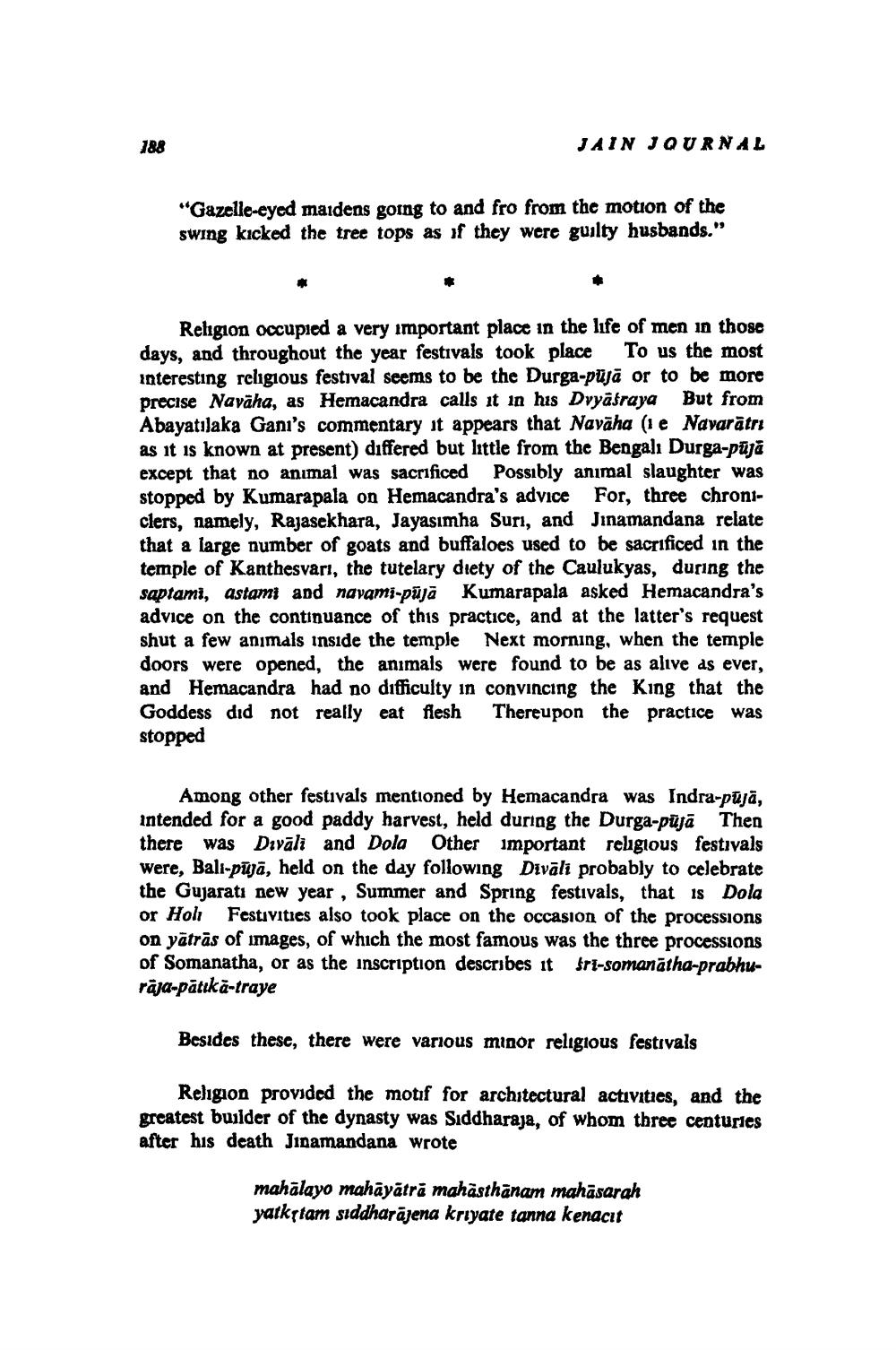________________
188
JAIN JOURNAL
"Gazelle-eyed maidens going to and fro from the motion of the swing kicked the tree tops as if they were guilty husbands."
Religion occupied a very important place in the life of men in those days, and throughout the year festivals took place To us the most interesting religious festival seems to be the Durga-pujā or to be more precise Naväha, as Hemacandra calls it in his Dvyasraya But from Abayatilaka Gani's commentary it appears that Navāha (1 e Navarātri as it is known at present) differed but little from the Bengali Durga-püja except that no animal was sacrificed Possibly animal slaughter was stopped by Kumarapala on Hemacandra's advice For, three chroniclers, namely, Rajasekhara, Jayasımha Suri, and Jinamandana relate that a large number of goats and buffaloes used to be sacrificed in the temple of Kanthesvari, the tutelary diety of the Caulukyas, during the saptami, astami and navami-pājā Kumarapala asked Hemacandra's advice on the continuance of this practice, and at the latter's request shut a few animals inside the temple Next morning, when the temple doors were opened, the animals were found to be as alive as ever, and Hemacandra had no difficulty in convincing the King that the Goddess did not really eat flesh Thereupon the practice was stopped
Among other festivals mentioned by Hemacandra was Indra-pūjā, intended for a good paddy harvest, held during the Durga-pūjā Then there was Divāli and Dola Other important religious festivals Were, Bali-pūjā, held on the day following Divāli probably to celebrate the Gujarati new year, Summer and Spring festivals, that is Dola or Holi Festivities also took place on the occasion of the processions on yātrās of images, of which the most famous was the three processions of Somanatha, or as the inscription describes it fri-somanātha-prabhurāja-pātikā-traye
Besides these, there were various minor religious festivals
Religion provided the motif for architectural activities, and the greatest builder of the dynasty was Siddharaja, of whom three centuries after his death Jinamandana wrote
mahalaya hayặtrẻ mahāsthanam ahasarah yatkstam siddharājena kriyate tanna kenacit




